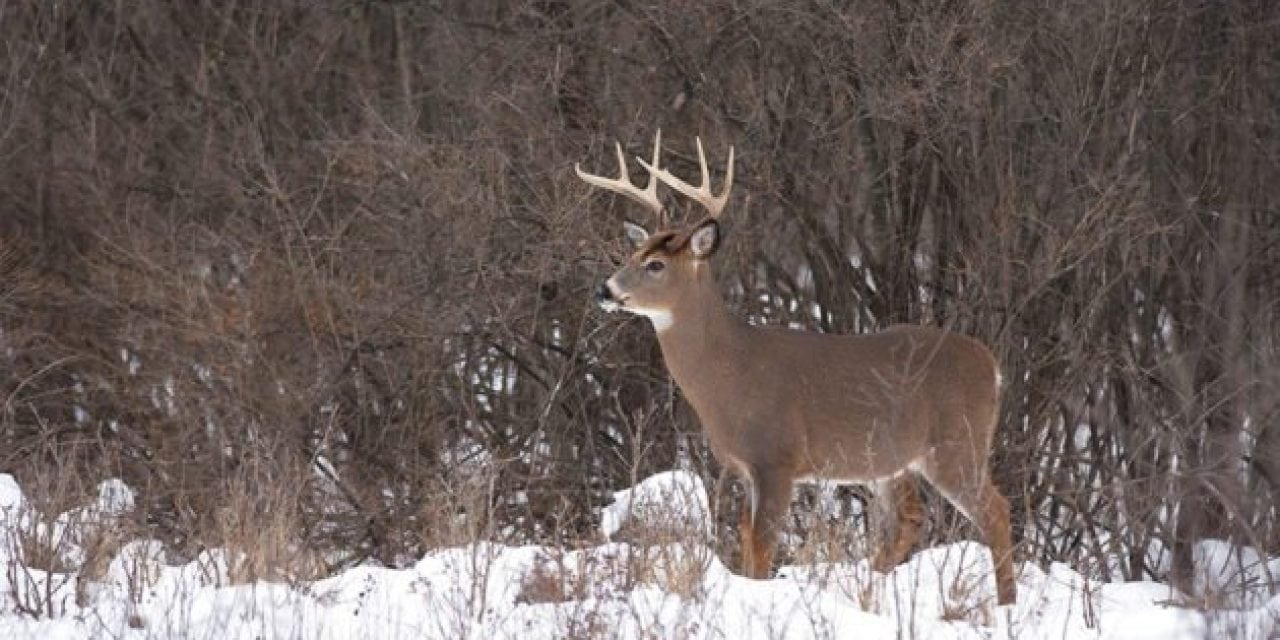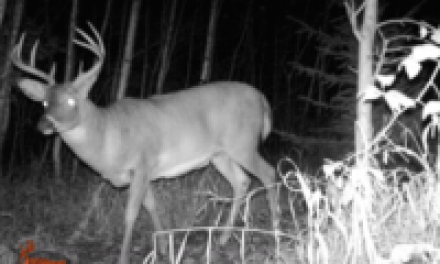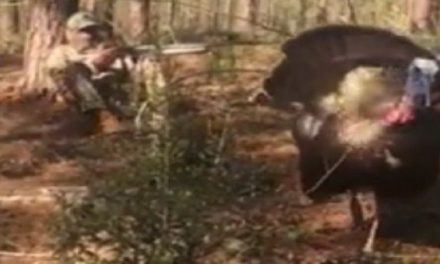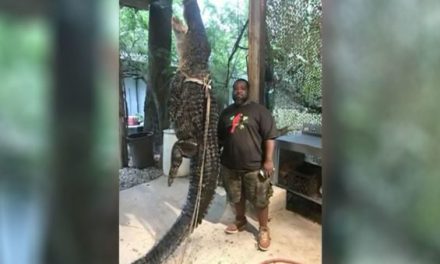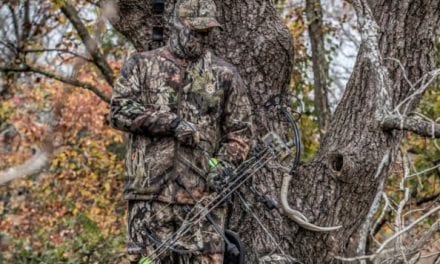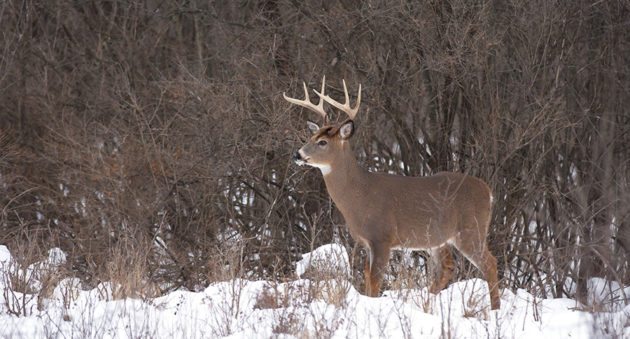
Time is dwindling down and hunting season is coming to an end, but that doesn’t mean you can’t still be successful in December, or even beyond.
You can’t kill ’em from the couch.
We’ve all heard that before, but the truth of the matter is, you really can’t. For some, they are just flat out over hunting season. For me, I am just as excited to hunt in December as I am opening weekend in September.
This December I was able to harvest my biggest buck to date. Every year I keep a set of field notes of my own findings. This year was the third year I was hunting on a particular farm and because of information I had gathered while shed antler hunting, I was able to bring success to my 2017 hunting season.
Here’s what I learned, and what I want to pass on to further your chances of having a good end of the season.
1. Get on the food source
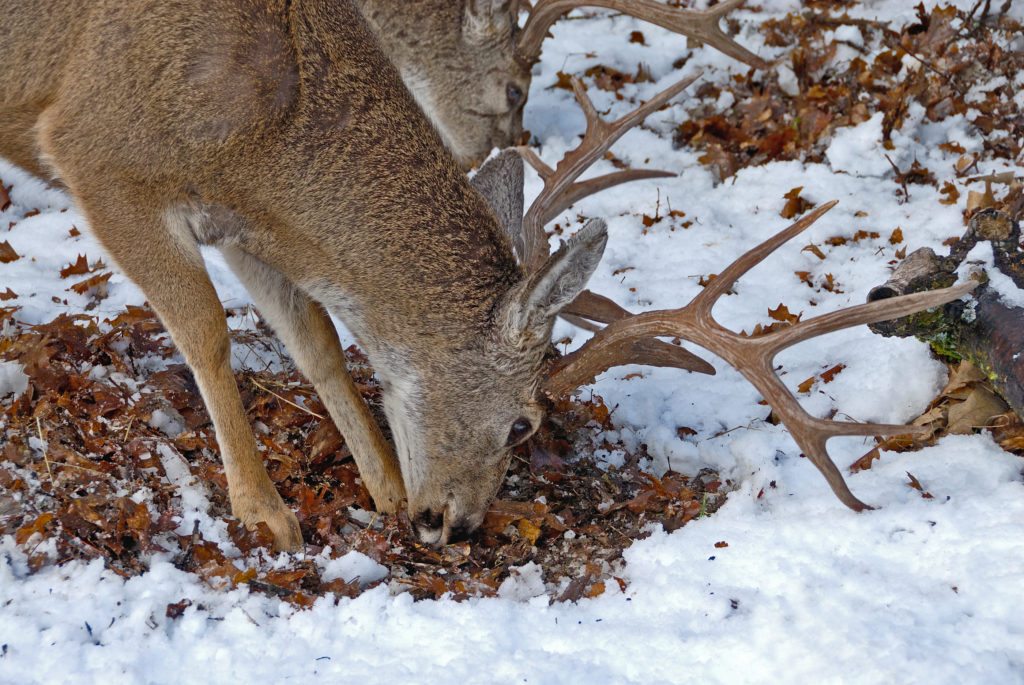
Looking back through my field notes, I noticed one major thing: The first couple weeks of December in the Northeast, the mature bucks are focused on food.
They are exhausted, they have dropped a great amount of body weight, and they are ready to recuperate with some high-carb foods. For the past few weeks, these deer have gone hours and days without food and have been so focused on breeding the does. Often times bucks have run themselves nearly to their own death due to their lack of nutrition.
If you have any late season food plots or were able to convince the farmer to leave a portion of his corn or soybean standing, now is the time to set up on those locations. Many of the does have grouped back up with one thing on their mind as well: food.
2. Tuck into the edge of the bedding area
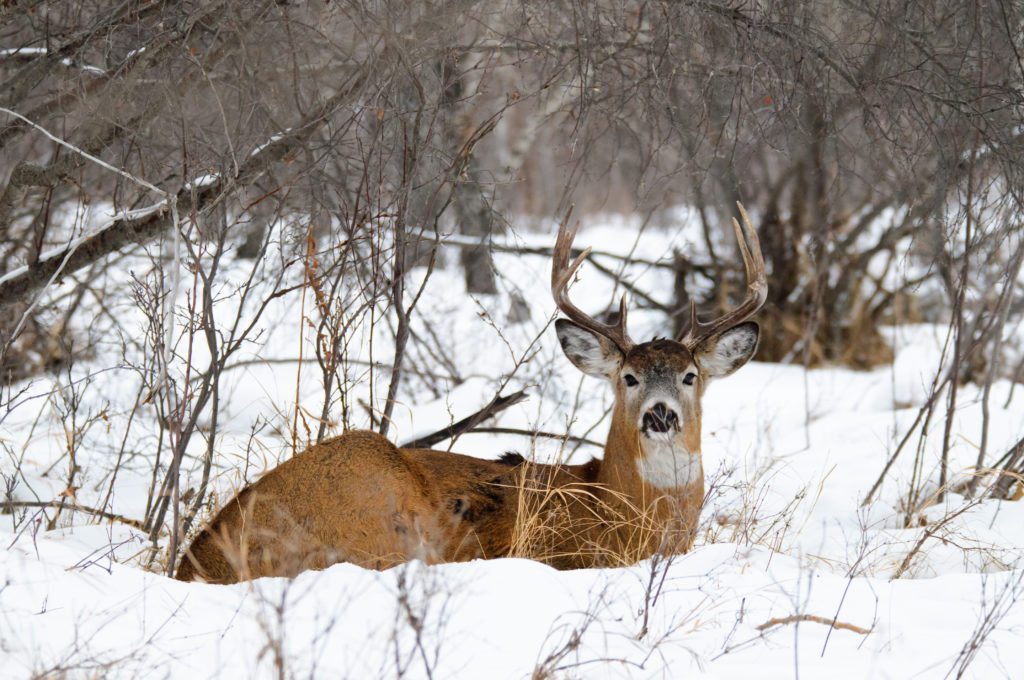
I can’t stress this enough, and this is probably the best advice I can give anyone when it comes to late season deer hunting. If you know of a bedding area that holds plenty of deer or actively holds mature bucks, this is where those deer are now.
A bedding area that is close to a food source is dynamite in December. As mentioned before, the bucks are exhausted, they need food and rest. If you can get in between these two, there is no denying you will be successful.
Tips when hunting the bedding area:
Do not, I repeat, do not enter the bedding area. Unless you don’t plan on hunting the property again for the year and are a risk taker, stay away from entering the bedding area.
Stay on the downwind side of the bedding area. You will only ruin your hunt if you set up in your stand and your wind is blowing from you into the bedding area. Sure, you may see a few younger deer, but the smart, mature buck that you are after is much smarter than you think.
Get in early and leave as quietly as you can. Think of it as knowing where the grocery store is and knowing a community where the hit list buck lives. If you end up showing up on the front porch, knocking on the door and causing a commotion, the buck that lives there is going to stay inside or sneak out the back door.
Tread lightly with both your sound and scent and you only increase your chances for success.
3. “The Second Rut”
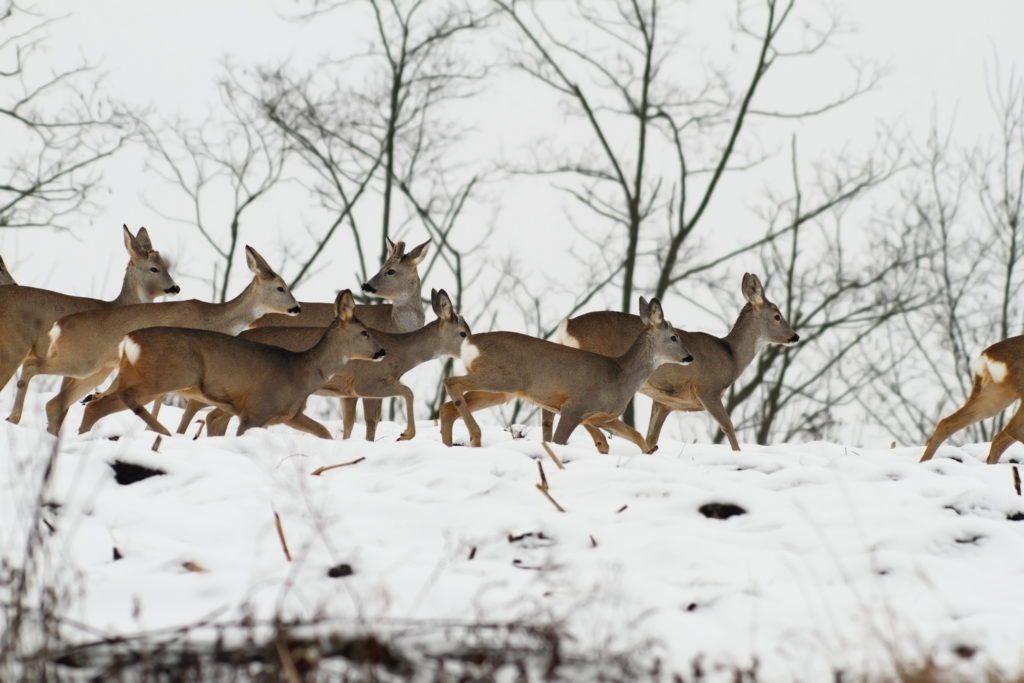
Is this true? Is there really a thing called the second rut? This is such a controversial topic amongst deer hunters and I have yet to formulate my own opinion. What I do know, however, is there is still rut activity in December.
Of course, I’m talking about the northern region as we all know things is Texas are just kicking off around this time.
Towards the end of November, I have traveled through several states hunting and made my way back home in Pennsylvania and Maryland. The deer during the first two weeks of December are focused on food but are still pushing does around. Knowing where the does go this time of the year is crucial to being successful.
As the does group back up and travel in herds to find food, the bucks will still work their way to scent check these deer. They are looking to find that doe that was never bred who is making their way back into estrous or that younger doe who never entered estrous yet.
Keeping an eye on your deer herd in the late spring and into summer can help you find when the majority of your deer breed. If fawns are being born well into June and July, there is a good chance they were bred in December. Most does are pregnant for around 200 days, so when you begin to see fawns make a note.
When you think you have witnessed one of the last fawns being born, make another note. From there count back about 200 days and that will usually give you a rough idea of when your deer are breeding.
4. Calling and Rattling
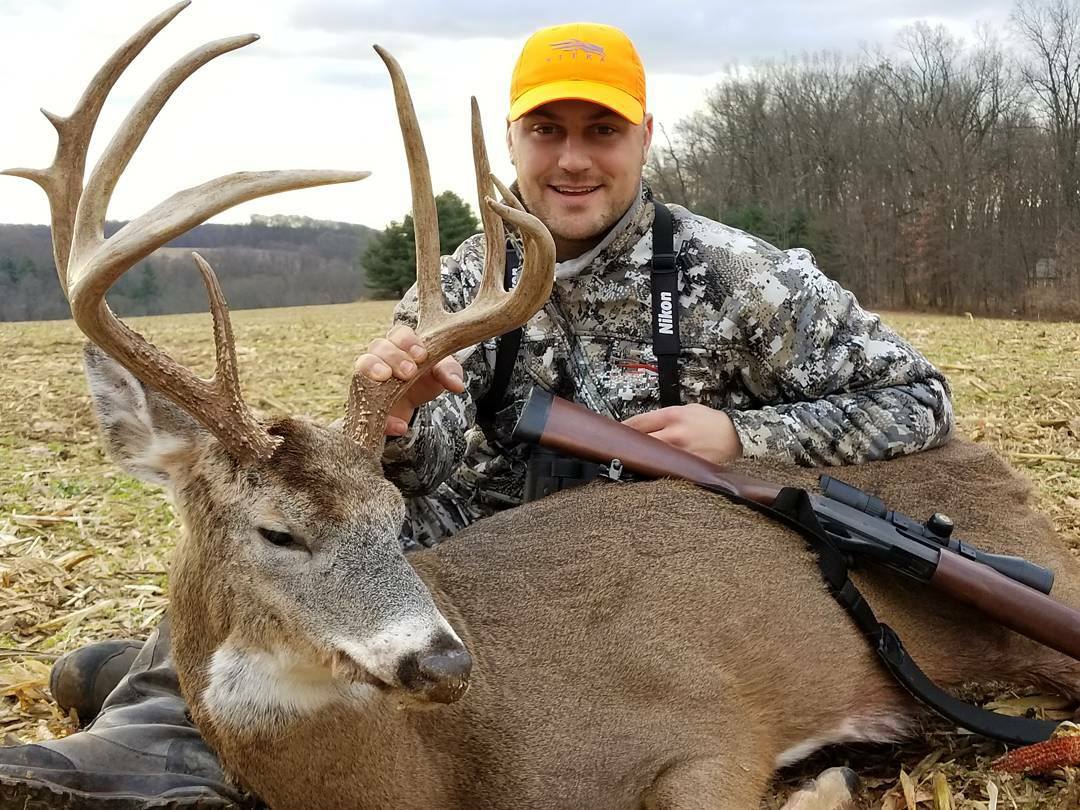
At this point in time I am usually done with calling. I see so many deer in larger groups that I have always withheld from doing any calling. That changed this year.
I was watching a group of six does feeding on the downwind side of a bedding area. This was a property that I am contracted with to remove a specific number of deer off of annually. I shouldered my shotgun, popped off the safety, and just as I was about to squeeze the trigger on a mature doe, I heard two bucks fighting within 100 yards from me in the bedding area. At that time I held off on shooting the doe and reached for my grunt call.
I completed a thirty second set of soft grunts. I then followed with two longer, deeper grunts trying to imitate two different deer in the area. In less than five minutes I had three bucks under my treestand and all of which were three years and older. Of course a more mature, 140″ whitetail stepped out as well, and was met with a sabot from my shotgun.
Last year in late November I would do what I call “tickle the tines”. Which is my slang for lightly rattle. I would try my best to imitate two bucks just sizing each other up. It has worked plenty more times in both early and late season than full on rattling.
Up until the first week of December this year, I would never rattle but after hearing those bucks fighting, I think I will continue to try it as the season comes to an end.
5. Go Get Lost
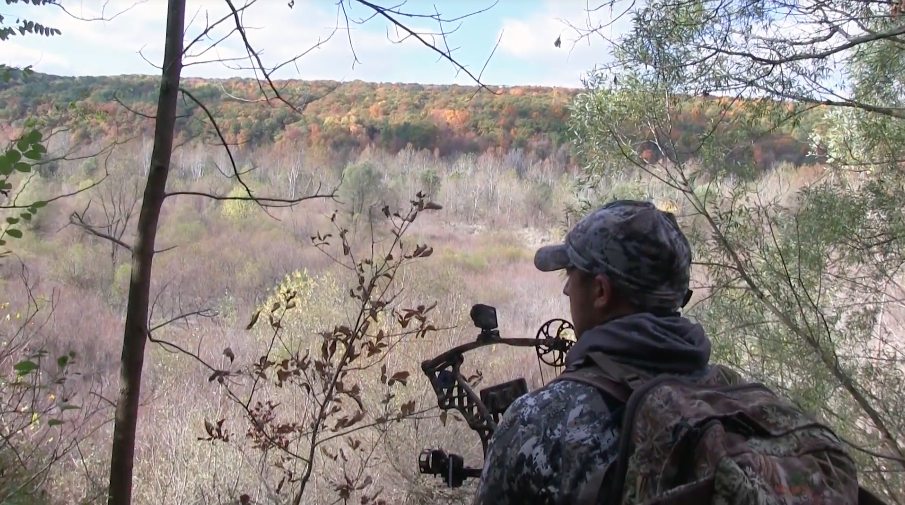
I don’t mean this literally, but as a public land hunter, this is my time to find new ground. Often I’ll wait until a fresh track of December snow comes for the best chance. I will then make my way deeper and further than ever before. This is a great time to look at pieces of property that I didn’t have time to dedicate to earlier in the season.
I like to move in and look for a great deal of deer sign. More specifically, I’ll look for the bedding areas. Once I find the bedding areas, then I look for the food. Most hunters do that the other way around, but I have found that finding the bedding area is key to being successful year after year.
There are several grocery stores where I live in Southern Pennsylvania, but I lay my head down at night at only one place.
Of course, deer operate differently however the it’s proven to work consistently for me on public land.
If you aren’t fortunate enough to get snow you can still find success by going deeper. You may just have to change your tactics a little bit. With no snow, I recommend walking at a little slower pace. You will want to keep the wind in your face if possible. Also, try to keep your head up and continually scan for deer.
The deer begin to herd up now so if you see one, there is a good chance you will see more. Once you find them, look for old buck rubs and scrapes that are being revisited. After you find these, mark the area and spend a day or two hunting there.
If you’re limited on time, hang a trail camera and move on to the next piece of property. At the end of the season, go back, collect your cards and prepare yourself for next years late season.
6. Do Some Deer Drives

One of my favorite things to do in the entire season happens the last weekend at hunting camp in the Adirondack Mountains. Friday night we show up, play cards, and eat like kings. Then Saturday morning we would start out doing deer drives. The deer drives would last all day and well into the early afternoon. We would skip the evening watch and celebrate the end of a hunting season in a beer drinking fashion.
I practice drives on both public land with the bow and then late season only, with a gun. They work great for filling the freezer, satisfying any unfilled tags, and providing a great opportunity to take a great buck if you haven’t yet for the season.
Many will say that if you perform a deer drive at the end of the season it will not affect the deer on your property. I cannot confirm or deny this to be true, but I know plenty of hunters who I respect and trust who swear that it will not affect the comfort, security, and well-being of the deer in the area.
The key to doing the drives are keeping them small. You only want stir the deer up, not panic them.
Don’t let a drive get so big that you push the deer off your property. Smaller drives have always been more successful for us, especially when executing them while bowhunting.
If you know the area, push them towards bedding and get them up on their feet. If you are unfamiliar with the area, look for the thickest area you can find and push it. In the wintertime, deer like to bed in the heat of the sun. South-facing hillsides get the most sun so finding these areas could be key as well.
When it comes to being successful in the late season, especially December, it may not be as easy as mid-November. The thing is, it can be if you do your homework. If you have yet to punch your tag, now is not the time to be down on yourself. Now is the time to get out and get the job done. Remember, you can’t kill them from the couch.
Like what you see here? You can read more articles by Dustin Prievo here. Follow him and his hunting team, Top Pin Outdoors, on Twitter, Facebook and Instagram.
NEXT: TOP 5 HUNTING QUESTIONS EVERY NEW HUNTER ASKS
WATCH
The post 6 Successful Hunting Tactics for Whitetails in December appeared first on Wide Open Spaces.

